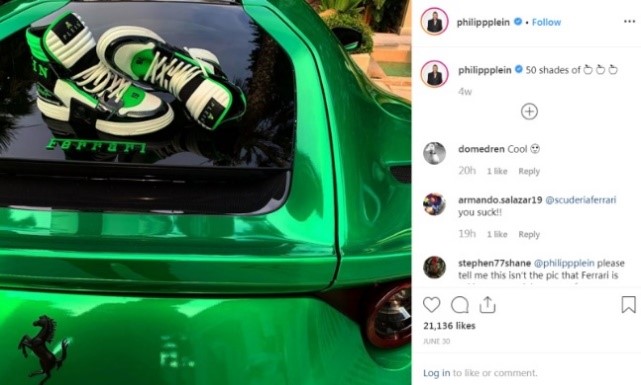Yesterday, in a decision that will be welcomed by the fashion industry, the United States Supreme Court ruled that certain design elements of cheerleader uniforms may be eligible for copyright protection. Star Athletica, L.L.C. v. Varsity Brands, Inc. The Court held that, “a feature incorporated into the design of a useful article is eligible for copyright protection only if the feature (1) can be perceived as a two- or three-dimensional work of art separate from the useful article and (2) would qualify as a protectable pictorial, graphic, or sculptural work—either on its own or fixed in some other tangible medium of expression—if it were imagined separately from the useful article into which it is incorporated.” Justice Clarence Thomas authored the 6-2 majority opinion, addressing disagreement among lower courts as to the proper test for determining if certain design elements could ever qualify for copyright protection.
This case involved lines, chevrons, and colorful shapes on cheerleader uniforms. In finding that these elements could be covered by copyright, the appeals court below had identified nine different approaches that various courts and the Copyright Office had employed over the years to address “separability.” The appeals court fashioned its own test and found that the design features of Varsity Brands’ cheerleader uniform played no role in the overall function of the article as a cheerleading uniform, and the elements were separable from the utilitarian aspects of the uniform and thus eligible for copyright protection.
The Supreme Court affirmed. Applying § 101 of the Copyright Act, the Court found that the decorations on the uniforms at issue could be identified as having pictorial, graphic, or sculptural qualities, and the arrangement of the decorations could be placed in another medium (e.g. placed on a painter’s canvas) without replicating the uniforms themselves. Thus, the two-dimensional work of art fixed in the uniform fabric met both the separate-identification and independent-existence requirements of the statute. Importantly, the Court held only that the uniform elements are eligible for protection in concept; now the trial court must determine whether Varsity Brands’ specific lines, chevrons, and shapes are original enough to merit copyright protection.
Justice Ruth Bader Ginsburg concurred in the result, pointing out that the Court did not have to discuss the separability test at all because the designs at issue were not themselves useful articles, but rather standalone, two-dimensional pictorial and graphic works reproduced on a useful article. Justice Stephen Breyer, joined by Justice Anthony Kennedy, dissented, arguing that even under the majority’s test, the designs cannot be perceived as separate from the cheerleading uniform.
Thus, although the majority offers some clarity about the proper approach to separability, the dissent demonstrates that analysis may yield divergent results. The decision is likely to be embraced by fashion industry leaders and other garment design stakeholders for its recognition that certain garment design elements may be protectable under the Copyright Act. K&L Gates will continue to monitor litigation in this area and provide updates.
A link to the opinion can be found here: https://www.supremecourt.gov/opinions/16pdf/15-866_0971.pdf
By: David Byer, John Cotter, Shamus Hyland and Eric Lee

